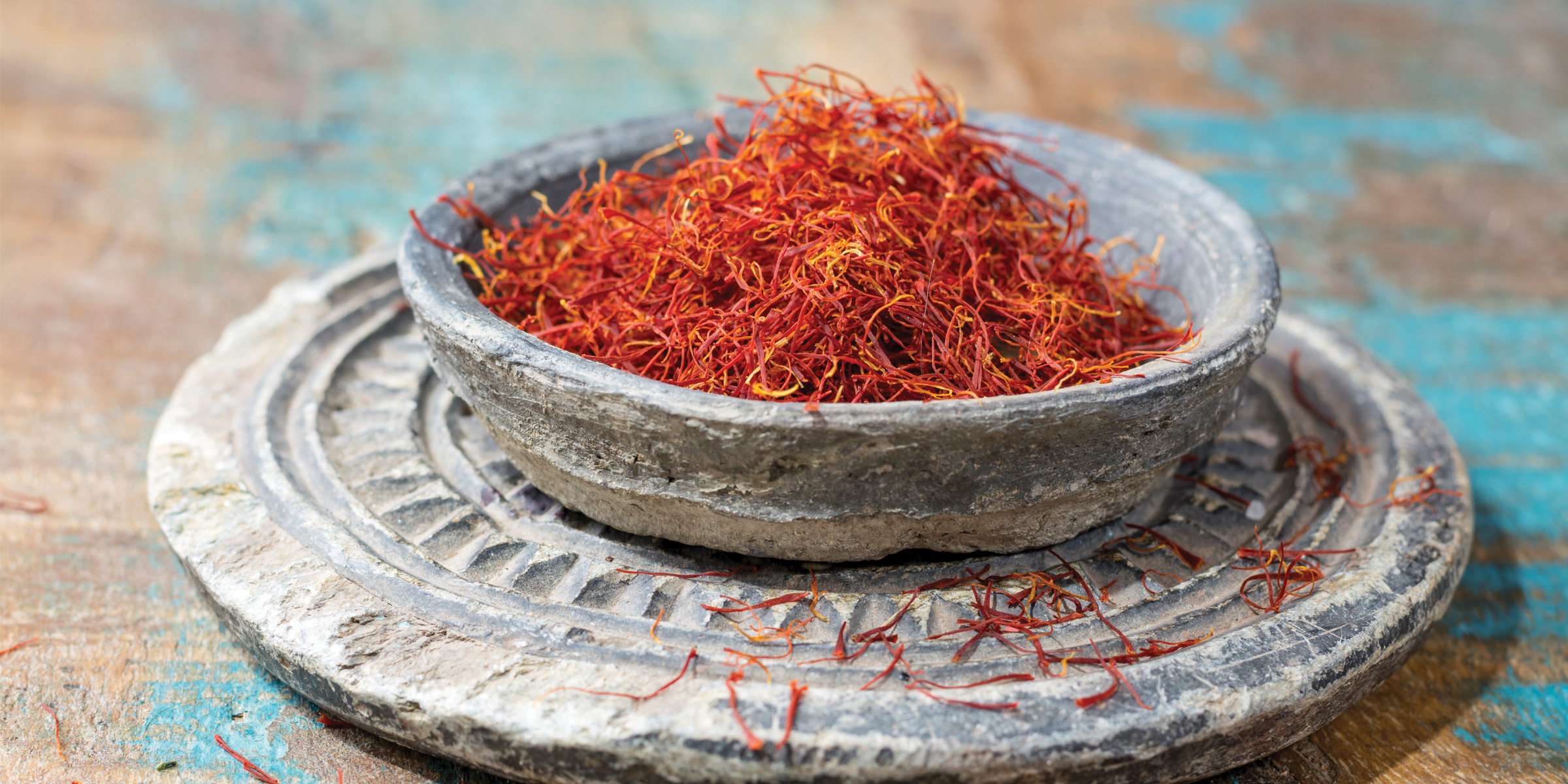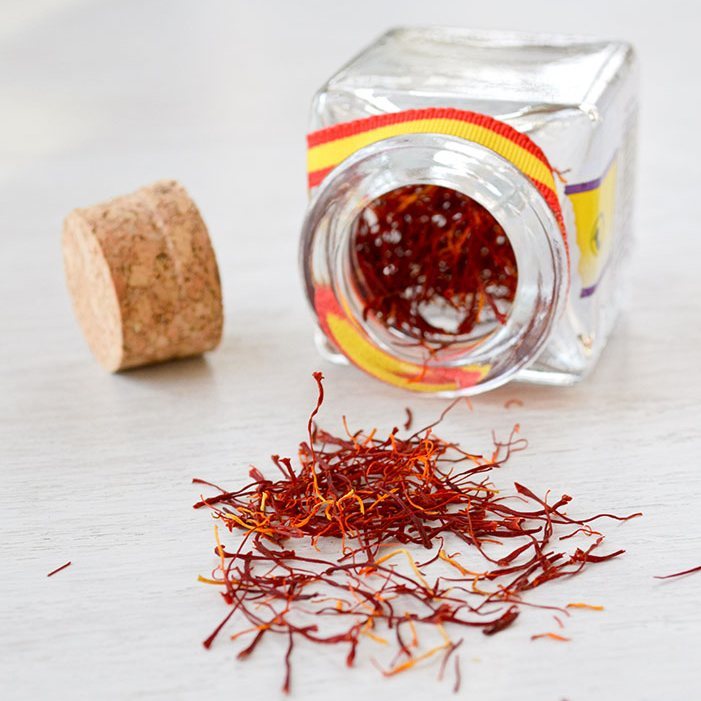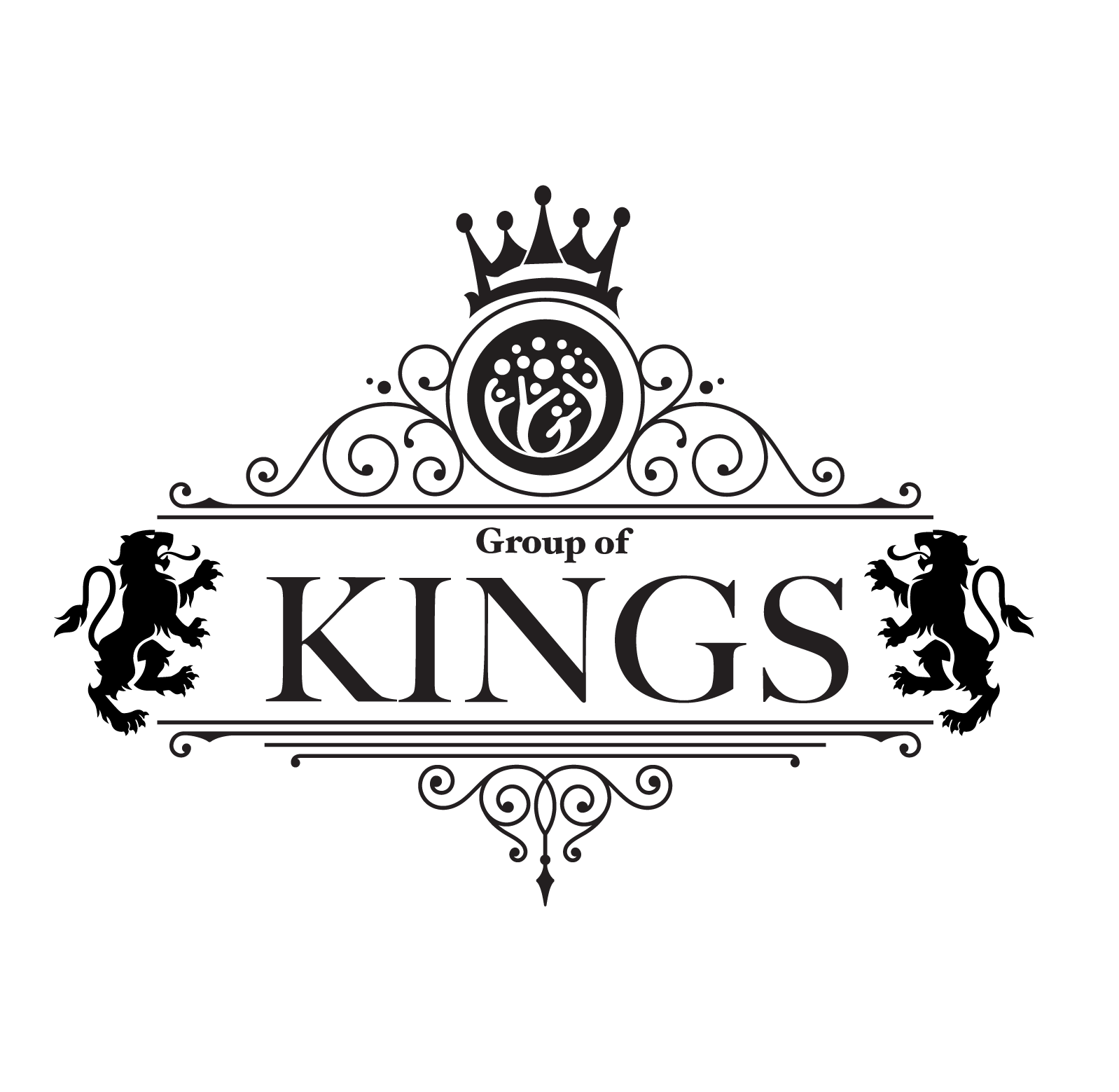

Persian Saffron
100% Natural & OrganicAbout Saffron
Golden Saffron is specialized only on whole red thread Persian saffron in the world. Our mission has been always dedicated to offering the premium quality saffron and top saffron grades. Our offer is harvested from Organic Saffron Farms and its 100% Natural red Threads exclude any chemical or preservatives.
Our Persian Saffron is made up of all red stigmas which have been professionally cut and separated from the style by hand, making sure there is absolutely no break or damage to the saffron threads.
It’s then Naturally Flash-Dried, a method Persian Premium Saffron has used and perfected, meaning it’s dried so fast that it loses no taste, vitamins, or nutrients and minerals in the process. You can test the quality of our saffron with just your eyes and nose.
As soon as you open each of our Premium Quality saffron packages you will experience an amazing natural bloody red colour comes along with the smooth nice smell of this magical spice that spread all over the place; Which strongly prove that our Saffron has no artificial components and it’s 100% Natural and High quality.
The deep natural red colour is rated as “Grade I Saffron” in the world and it comes with an inspiring smell which you can find this combination only in our Saffron.
Saffron is the name for the threads (stigmas) from the Crocus Sativus flower. There are only 3 saffron stigmas for each individual flower, meaning Saffron is considered one of the rarest spices in the world!
In fact, it takes over 80,000 blossoms or 240,000 hand-picked saffron stigmas to make a single pound of this popular product.
Our high-quality Persian Saffron is sourced directly from Iran – Khorasan where the first saffron flower was discovered. Ensuring consistent premium quality batches in every single gram!
Shop Online
Pay with PayPal or your credit card and buy our products onlineNo Results Found
The page you requested could not be found. Try refining your search, or use the navigation above to locate the post.

History of Saffron
Saffron is one of the highly prized spices known since antiquity for its color, flavor and medicinal properties. It is the dried “stigma” or threads of the flower of the Crocus sativus plant. It is a bulbous perennial plant that belongs to the family of Iridaceae, in the genus, Crocus, and known botanically as Crocus sativus.
This exotic spice is a native of Southern Europe and today cultivated worldwide in many countries, particularly in Spain, Italy, France, Greece, Turkey, Iran, and in the Indian state of Jammu and Kashmir.
The Crocus sativus plant grows to about 15-20cm in height and bears lavender colored flowers during each season which lasts from October until November. Each flower features perianth consisting of a stalk, known as “style,” connecting to three “stigmas” or threads to the rest of the plant. These orange-yellow colored stigmas along with the “style” constitute “saffron” a prized condiment spice.
Good saffron crop production demands cold, dry climate with well-drained rich fertile soil and irrigation facilities or sufficient amount of rainfall. The flowers harvested during the early-morning hours and soon their stigma separated, allowed to dry, and packed for marketing.
Saffron has a distinct flavor that comes from chemical compounds in it such as picrocrocin, and safranal. It also contains a natural carotenoid chemical compound, crocin, which gives saffron its golden-yellow hue. These traits along with its medicinal properties make it a valuable ingredient in many cuisines worldwide.

Health Benefits of Saffron
Saffron contains several plant-derived chemical compounds that are known to have been antioxidant, disease preventing, and health promoting properties.
Their flower pistils compose several essential volatile oils, but the most important of them all is safranal which gives saffron its pleasant flavour. Other volatile oils in saffron are cineole, panthenol, pinene, borneol, geraniol, limonene, p-cymene, linalool, terpinene-4-oil, etc.
This colourful spice has many non-volatile active components; the most important of them is α-crocin, a carotenoid compound, which gives pistils their natural golden-yellow colour. It also contains other carotenoids, including zeaxanthin, lycopene, α- and ß-carotenes. These are important antioxidants that help protect the human body from oxidant-induced stress, cancers, infections and acts as immune modulators.
The active components in saffron have many therapeutic applications in many traditional medicines as antiseptic, antidepressant, antioxidant, digestive, anti-convulsant.
This novel spice is an excellent source of minerals like copper, potassium, calcium, manganese, iron, selenium, zinc and magnesium. Potassium is an important component of cell and body fluids that helps control heart rate and blood pressure. The human body uses manganese and copper as co-factors for the antioxidant enzyme, superoxide dismutase. Iron is essential for red blood cell production and as a co-factor for cytochrome oxidases enzymes.
Additionally, it is also rich in many vital vitamins, including vitamin-A, folic acid, riboflavin, niacin, and vitamin-C that is essential for optimum health.
Medical Uses of Safron
The active components present in saffron have many therapeutic applications in many traditional medicines since a long time as anti-spasmodic, carminative, diaphoretic.
Research studies have shown that safranal, a volatile oil found in the spice, has antioxidant, cytotoxic effect on cancer cells, anticonvulsant and antidepressant properties.
The α-crocin, a carotenoid compound, which gives the spice its characteristic golden-yellow hue, has been found to have antioxidant, antidepressant, and anti-cancer properties.
Selection and storage
Fresh saffron is available in the specialised spice markets. Try to buy whole dried stigma (pistils) instead of powdered saffron since often it may be adulterated. Choose well-sealed container from the authentic selling company label displaying the date of package and expiry.
Fresh spice should feature bright crimson-red colour, and when rubbed between fingers, should release a very pleasant aroma and stain golden-yellow. Look for lengthy stamens, each measuring 2 to 4 cm in length. Avoid inferior quality product featuring grey colour streaks or light spots on the stigma.This spice has a unique, pungent bitter-honey taste with a pleasant aroma.
Store inside a closed box and keep it in cool dark place (preferably inside the refrigerator) away from the light since light rays oxidize the pigments in saffron and offset its flavour.
Culinary uses
Just a pinch of fresh saffron is enough to enhance the flavour and colour of the entire recipe.
There are several methods to use it in the kitchen. the whole stigma can be added directly to the preparations, or often, the threads are ground to paste using traditional mortar and pestle and added to the recipes. In the third method, a pinch of saffron is added to a cup of hot water, steep; add this water to the ingredients.
Here are some serving tips:
Saffron employed as a flavouring base and colouring base in both food and drinks in the Mediterranean, and Asian cuisines.
Popularly known as “Kesar” in the Indian subcontinent, it has been in use in the preparation rice-pilaf, rice-pudding, “halwa” and other sweet dishes in many Indian, Pakistani, and Cental Asian countries. It is also used as a colour and flavouring base in the preparation of kulfi, ice-creams, cakes and drinks.
Safety profile
High doses of saffron can act as a uterine stimulant and in severe cases can cause miscarriage. Therefore, pregnant women may be advised to avoid this spice in the diet.
Express Delivery Available
All kind of delivery and postal options is available for customers all over the world. Please contact us for more information in regards to available delivery options.
Credit Card & PayPal Payments Accepted
We accept Visa, Master Card, and PayPal payments on checkout.
Credit Card & PayPal Payments Accepted
We accept Visa, Master Card, and PayPal payments on checkout.

Organic Saffron
There are many consumers around the world that are concerned about the health risks of synthetic pesticides and food additives. Australian customers are used to having the best and highest quality in food. We respect their expectations and consider professionally to prepare the best. Iranian Farmer supplier who farms this brilliant saffron doesn’t use Chemical material for cultivation. Our pure and natural Iranian saffron has NO synthetic pesticides, NO food additives, NO preservative substances, and NO synthetic food coloring unusually. Based on these true facts, we can claim to deliver our Iranian Saffron as an ORGANIC SAFFRON.

Pure Saffron
Pure saffron is simply recognized from the color of the saffron threads (filaments). If the color of the threads at the tip is not slightly orange, it’s the indication of the saffron threads being tinted red to look expensive. Also there should be No broken-off debris collected at the bottom of the saffron container. Broken debris is an indication of saffron threads being mixed with saffron substitutes, and therefore it’s not pure. The last requirement for pure saffron is that, No other yellow or white plant parts (style) should be mixed in with the red threads.

Grade A Fresh Saffron
Fresh saffron is recognized from its color and aroma. The color of saffron threads (filaments) must be all red vivid crimson with a slightly lighter orange-red color on the tips, and saffron’s aroma must be strong and fresh not musty. The quality of saffron is tied to its freshness and purity. It contains grade I saffron threads only. We are greatly honored to announce we always provide our customers with the best quality saffron around the world.
Make an Enquiry
If you are looking for the best quality, fresh Iranian saffron, we have good news for you. You are in the right place!Contact Information
Phone: 02 7900 7640, Mobile: 0449 736 336
Address: 14 Plympton Road, Carlingford NSW 2118
Trading Hours: Monday—Friday: 9:00AM–3:00PM and Saturday & Sunday: Closed





















































